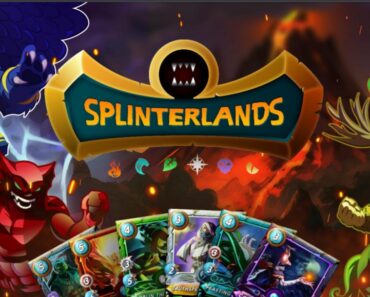Non-fungible tokens (NFTs) are changing the way we own things digitally. Here’s an introduction to what they are, and why they matter.
The non-fungible token has garnered significant attention as one of the most exciting, transformative innovations blockchain has to offer developers and businesses.
But what exactly is an NFT?
What makes them special, what gives them value, and how can they be used?
Let’s explore.
Fungible versus Non-Fungible
In order to determine what an NFT really is, we need to understand the concept of “fungibility.” The term might sound complicated, but it’s a simple idea that we can relate to our everyday lives.
FUNGIBLE
At its core, a fungible item is something that can be exchanged 1:1 with another item of the same classification/description.
Each fungible unit is essentially identical, and therefore interchangeable.
Currency is a perfect example of a fungible asset. Whether it’s your dollar bill, a dollar bill you found on the ground, or a dollar bill your crazy uncle keeps in his boot–each is worth 1 USD.
In addition to being interchangeable, fungible goods/assets are divisible. This means they can be added or divided without changing the fundamental nature of the item. A dollar can always be divided into any combination of coins totaling 100 cents and represent the same value.
Another key feature of fungibility is that slight physical differences between fungible assets have no real impact on their perceived or agreed value:
- A serial number on a banknote plays no role in impacting the face value when you try to use it to pay for anything, and has no intended effect on their utility.
- A crisp new $20 bill from the ATM will purchase just as much in a shop as one that’s crumpled, tattered, and passed through countless hands for a decade.
- Whether a €2 coin has the French, Dutch, or Austrian design on the reverse side has no bearing on their legal value in any countries within the European Union.
Ultimately, in the case of fungible goods, each unit is created equal. One $10 bill is the same as any other $10 bill. You can’t go into a supermarket and try to buy $50 worth of groceries with it (well you can, but it probably won’t work).
NON-FUNGIBLE
Things that are not directly interchangeable or replaceable are known as non-fungible.
Unlike fungible assets like Bitcoin, non-fungible items are characterized by:
Unique, verifiable identity
Provable scarcity
Indivisibility
In many ways, non-fungibility is tied closely to identity, be it the identity of the asset itself, its owner, or its creator.
Provable identity is everything:
- You can’t make a 77x53cm oil painting of a subtly smiling lady with no eyebrows, take it to the Louvre in Paris, and swap it for the Mona Lisa, despite shared dimensions, subject, and materials.
- A pair of Adidas Predators worn by Lionel Messi of FC Barcelona have more appeal than a pair worn by your local librarian.
- When a random teenager sprays graffiti on a wall, it gets painted over after people complain. When Banksy does it, it gets actively preserved and protected.
That’s the power of identity; the source, story, and history behind something all lend themselves to the creation of a unique, irreplaceable asset. Even the best forgeries and replicas are valued at a fraction of an original, in part because a famous creator lends a credible, fascinating history to the item in question.
Similarly, if something is directly tied to your individual identity, it’s unique and holds more value for you than anyone else. Passports from the same country look the same on the outside, but only you can (legally) use yours because of the information inside.
Condition, rarity, issuance, and personal bias can also play a role in the value of non-fungible assets:
A mint-condition Michael Jordan trading card is worth more than another copy of the same card that someone stuck between their bicycle spokes as a kid.
A Charizard holographic card is more prized than its vanilla equivalent. Remember the thrill of opening a pack to find a super-rare, shiny foil card?
Even though the story inside is the same, a first edition of The Fellowship of the Ring will be more sought-after than a modern reprint.
Humans just like some things more. Print #001 of a limited run seems cooler than print #329 of the same run. Some “lucky” numbers (e.g., 7 in many Western countries, 8 in China) can also carry a price premium.
Non-fungible assets aren’t interchangeable.
If you lend someone your Samsung Galaxy S21 to make a call, you want your same exact Samsung Galaxy S21 returned to you. It’s been made non-fungible through use, habit, data, network, apps, and experiences. Its history is incredibly valuable to you and cannot be replaced by another of the same item.
With some exceptions (such as fractionalized NFT real estate titles), non-fungible assets also aren’t divisible. They are made to exist, function, and trade as a whole. We don’t purchase 1/10th of a painting or half of a vehicle and expect them to serve or function according to their original intended purpose.
To recap:
Fungible: Items or assets that are considered identical. They are directly interchangeable like-for-like, and generally divisible at least to some degree.
Non-fungible: Items or assets with unique identities. They cannot be interchanged equally or divided. Value and ownership experience of different non-fungible items can vary greatly depending on individual properties.



